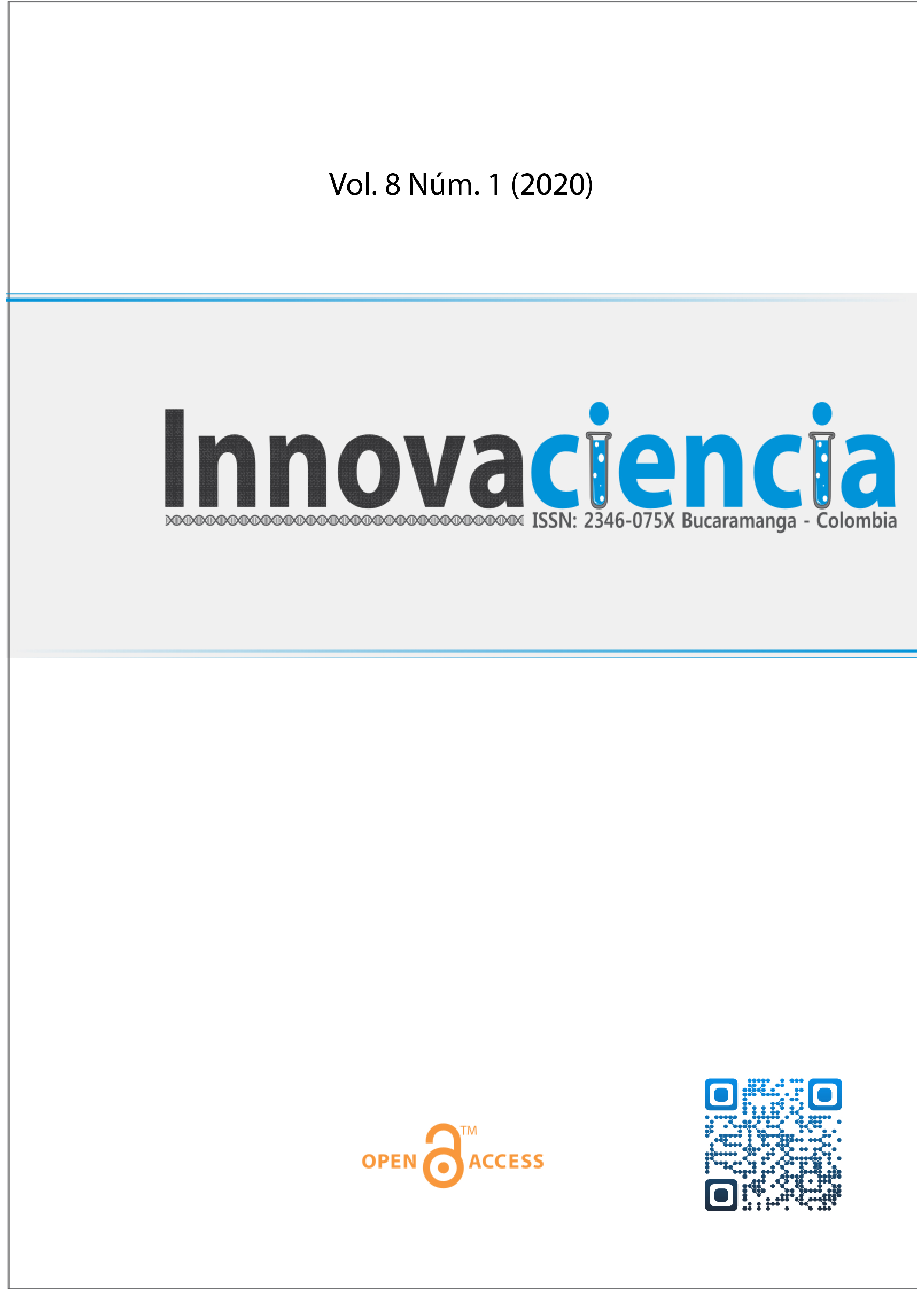Utilización de la red neuronal para la detección de somnolencia basada en señales de EEG y optimización en la selección de sus características mediante algoritmo genético
DOI:
https://doi.org/10.15649/2346075X.1004Palabras clave:
Drowsiness, EEG Signal, Optimization, Genetic Algorithm, Neural Network, Perceptron, Radial Base FunctionsResumen
One of the major causes of traffic accidents is driver’s drowsiness. For this reason, detecting whether the driver's eyes are open or closed is one of the critical factors in reducing road deaths. One way to detect whether your eyes are open or closed is to use EEG signals. EEG signals are obtained from the recording of electrical activity in the human brain. The present study uses a neural network that is applied to the driver's EEG signals to detect whether the eye is open or closed. The data of the EEG signals used in this paper consist of 14 features that are based on a statistical population of 600 people. Various neural network algorithms have been implemented for clustering these data into two classes of open or closed eyes, which are described in this paper. Perceptron neural network and radial base neural network (RBF) are two types of networks used in this paper. Also, in order to improve the execution speed and reduce the occupied space of the microcontroller, the genetic algorithm method has been used to optimize the fitting function of Fisher’s discriminant rate, in which the optimized function provides better results in the less occupied time and space.
Referencias
https://doi.org/10.1016/j.procs.2014.07.045
Kaur, R.K. and Kaur, G. (2013), "Neural Network Based Drowsiness Detection Using Electroencephalogram", International Journal of Engineering Research & Technology (IJERT), Vol. 2 Issue 10, October - 2013. ISSN: 2278-0181.
Blanco, A.D. and Ramirez, R. (2019), "Evaluation of a Sound Quality Visual Feedback System for Bow Learning Technique in Violin Beginners", An EEG Study. Front. Psychol. 10:165. doi: 10.3389/fpsyg.2019.0016.
https://doi.org/10.3389/fpsyg.2019.00165
Asadnejad, M. sarabi, s., rajebi, s. 2019. The investigation of the different methods of clustering based on artificial intelligence to classify the malignancy of cancer lymph. The fifth international conference on innovation and research in engineering sciences. Georgia, Tiflis
Graupe, D. (2007), "Principles of artificial neural networks", world scientific publishing co. Pte. LTD., Vol.6, second edition.
https://doi.org/10.1142/6429
Asadnejad, M. and Sarabi, S. and Rajebi, S. (2019), "Classification of Metastases or Malign Lymph by Lymphogram Results Using Bayesian, K-Nearest Neighbor and Artificial Neural Networks", 15th International Conference on Technical and Physical Problems of Electrical Engineering, Istanbul, Turkey.
McDonald, R. and Hall, K. and Mann, G. (2010), "Distributed Training Strategies for the Structured Perceptron". pp. 456-464. Association for Computational Linguistics.
Strizi, L. and Pervan, B. and Knezovic, J. (2019), "Deep Learning Accelerator on Programmable Heterogeneous System with RISC-V Processor", MIPRO 2019/CTS, 1126-1131.
Kheiri, s. and Yousefi, v. and Rajebi, S. (2019), "CLASSIFICATION WITH USING K-NEAREST NEIGHBOR, BAYESIAN AND NEURAL NETWORK METHODS IN DERMATOLOGY DISEASE", 15th International Conference on Technical and Physical Problems of Electrical Engineering, Istanbul, Turkey.
Buhmann, M.D. (2003), "Radial Basis Functions" Theory and Implementations. Cambridge University. ISBN 0-521-63338-9.
https://doi.org/10.1017/CBO9780511543241
Borghate, R.P. and Gosavi, S.K. (2014), "Frequency Offset Compensation in OFDM System Using Neural Network", International Journal of Advanced Research in Electrical, Electronics and Instrumentation Engineering, Vol. 3, Issue 7.
https://doi.org/10.15662/ijareeie.2014.0307035
Lemu, H.G. and Trzepieciński, T. and Kubit, A. and Fejkie, R. (2017), "FRICTION MODELING OF AL-MG ALLOY SHEETS BASED ON MULTIPLE REGRESSION ANALYSIS AND NEURAL NETWORKS", Advances in Science and Technology Research Journal, Volume 11, Iss. 1, March 2017, pages 48-57, DOI: 10.12913/22998624/68460.
https://doi.org/10.12913/22998624/68460
Wang, S. and Li, D. and Wei, Y. and Li, H. (2009), "A Feature Selection Method Based on Fisher's Discriminant Ratio for Text Sentiment Classification", WISM, LNCS 5854, pp. 88-97.
https://doi.org/10.1007/978-3-642-05250-7_10
Marathe, A. and Vyas, V. and Rege, P. (2017), "Inverse Fisher Discriminant Ratio based Training Set Selection for Optimal Classification Accuracy", International Journal of Applied Engineering Research, Volume 12, Number 20, pp. 9535-9541. ISSN 0973-4562.
Lin, T.H. and Li, H.T. and Tsai, K.C. (2003), "Implementing the Fisher's Discriminant Ratio in a k-Means Clustering Algorithm for Feature Selection and Data Set Trimming", American Chemical Society, 44, 76-87.
Rahmani, O., Taherkhani, A., Rahmani, M., & Karimiyan, T. (2014). The optimal design of earthing system based on genetic algorithm. Advances in Environmental Biology, 644-657.
Davis, L. (1991) Handbook of Genetic Algorithms, Van Nostrand Reinhold, New York.
Descargas
Publicado
Cómo citar
Descargas
Número
Sección
Licencia
Todos los artículos publicados en esta revista científica están protegidos por los derechos de autor. Los autores retienen los derechos de autor y conceden a la revista el derecho de primera publicación con el trabajo simultáneamente licenciado bajo una Licencia Creative Commons Atribución-NoComercial 4.0 Internacional (CC BY-NC 4.0) que permite compartir el trabajo con reconocimiento de autoría y sin fines comerciales.
Los lectores pueden copiar y distribuir el material de este número de la revista para fines no comerciales en cualquier medio, siempre que se cite el trabajo original y se den crédito a los autores y a la revista.
Cualquier uso comercial del material de esta revista está estrictamente prohibido sin el permiso por escrito del titular de los derechos de autor.
Para obtener más información sobre los derechos de autor de la revista y las políticas de acceso abierto, por favor visite nuestro sitio web.
















